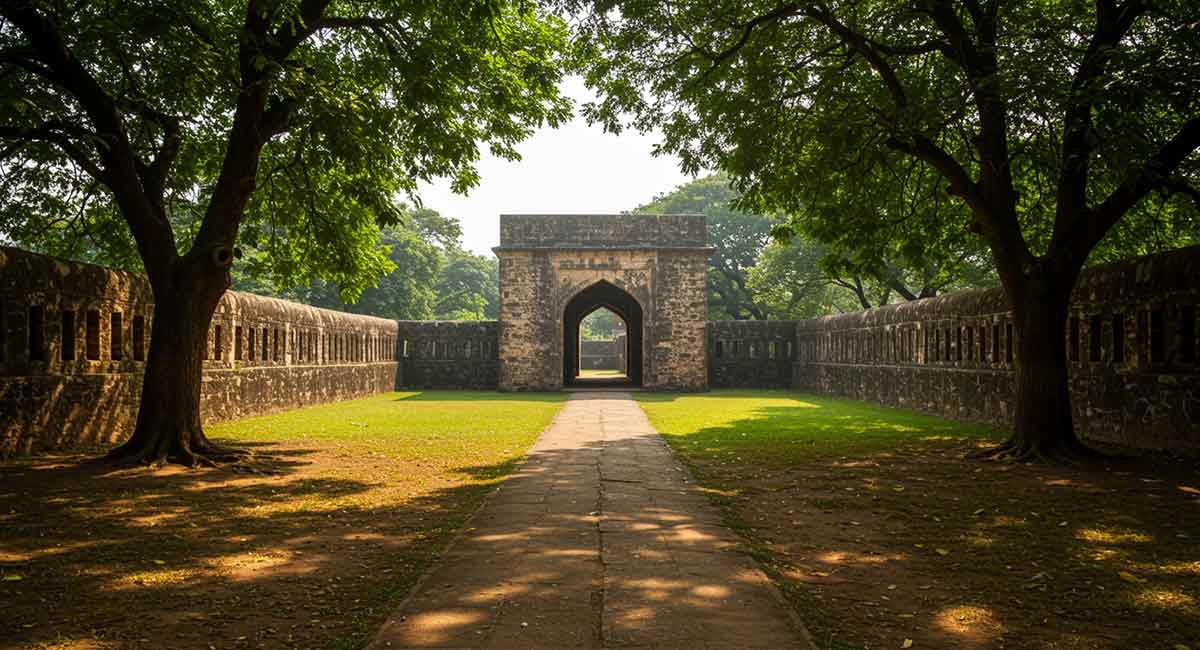Balaramgarh Fort, Odisha
Balaramgarh Fort, located in Odisha, India, is a historic site known for its architectural and cultural significance. Built during the reign of the Bhoi dynasty, the fort once served as a strategic military base and royal residence. Surrounded by natural beauty, it showcases the traditional fortification styles of ancient Odisha, including thick walls and strategic watchtowers. Though now in ruins, Balaramgarh Fort remains a symbol of regional pride and history, attracting visitors interested in heritage, archaeology, and Odisha’s princely past legacy.
A Look into the Past
Balaramgarh Fort, located in the Subarnapur district of western Odisha (formerly Sonepur), is a structure that whispers tales of the region’s royal past. King Balaram Deo, a ruler of the Sonepur princely state under the Bhanja dynasty, built the fort in the 18th century. He constructed it not only as a symbol of royal authority but also to play a strategic role in safeguarding the kingdom from external invasions.
The Bhanja rulers of Sonepur were known for patronizing art, architecture, and religion. Balaramgarh Fort served as the residential palace and the administrative seat of the kingdom during the reign of Balaram Deo, and it remained a political center for several decades.
Architecture and Layout
Though time and neglect have eroded much of its original structure, Balaramgarh Fort still showcases remnants of its fortified walls, watchtowers, and stone architecture. The fort once had thick walls made from locally sourced laterite and stone masonry, surrounded by a moat for defense purposes.
Historians believe that some sections of the fort complex housed royal chambers, courtyards, and a durbar hall. Visitors today can spot fragments of sculptural elements, arches, and traditional Odia architectural motifs, giving a look into the grandeur that once stood here.
The builders designed the fort’s layout to balance defense and beauty, making it a residential palace and a military stronghold. The strategic location of Balaramgarh Fort on the banks of the Tel River, a tributary of the Mahanadi, further highlights its importance in controlling trade and protecting the region.
A Place Full of Culture and Traditions
The fort is a relic of military might and reflects the region’s deep cultural and spiritual ethos. The nearby town of Sonepur is often called the “Second Varanasi of India” due to its numerous temples and ghats. Balaramgarh Fort and its surrounding region closely connect to Odisha’s temple traditions, and several ancient shrines stand within a few kilometers.
The fort likely served as the backdrop for religious festivals, royal ceremonies, and cultural performances during its heyday. The Bhanja rulers patronized artisans, poets, and scholars, contributing to the region’s artistic legacy.
The Fort Today
Today, Balaramgarh Fort is a monument, hidden in plain sight. Overgrown vegetation, weathered stones, and a lack of preservation have led to the slow decay of this once-mighty fort. Yet, it holds a raw, untouched beauty that appeals to heritage enthusiasts, photographers, and offbeat travelers seeking stories beyond the tourist map.
Local groups have recently started efforts to raise awareness about the fort’s historical value, but the government has done little to restore the site or document it archaeologically. Visiting Balaramgarh Fort today feels like stepping into a different era where every brick has a story.
How to Reach Balaramgarh Fort?
Balaramgarh Fort is near Subarnapur (Sonepur), which is well connected by roadways. The closest major city is Balangir, about 50 km away.
- By Road: Regular buses and taxis are available from Balangir, Bhubaneswar, and Sambalpur.
- By Rail: Balangir is the nearest railway station with connections to major cities like Bhubaneswar and Cuttack.
- By Air: Bhubaneswar (Biju Patnaik International Airport), about 300 kilometers distant, is the closest airport.
From Subarnapur town, the fort is easily accessible by auto-rickshaw or cab.
Best Time to Visit
Winter, from October to February, is the best season to visit Balaramgarh Fort because of the beautiful weather that makes it easy to explore historical places.
The Case for Preservation
Balaramgarh Fort is a silent witness to centuries of change, from princely grandeur to colonial transitions and post-independence neglect. Its current dilapidated state calls for urgent attention from heritage conservation bodies. Restoring this fort would preserve Odisha’s regal history and promote heritage tourism in western Odisha, an area often overshadowed by coastal attractions.
Involving local communities, historians, and conservation experts can help transform Balaramgarh Fort from a forgotten ruin into a vibrant cultural landmark. With proper documentation, guided tours, and interpretive signage, the fort can serve as a living museum that educates and inspires.
Wrapping Up
While it may not have the towering ramparts of Rajasthan or the marble elegance of Mughal forts, Balaramgarh Fort carries a charm of its own-a quiet, dignified reminder of Odisha’s rich yet underrepresented history. For those who love untold stories, Balaramgarh Fort is a journey into the soul of Odisha’s heartland.
As more travelers turn toward sustainable and meaningful exploration, places like Balaramgarh Fort deserve a spot on the map, not just for what they were, but for what they can still become.


